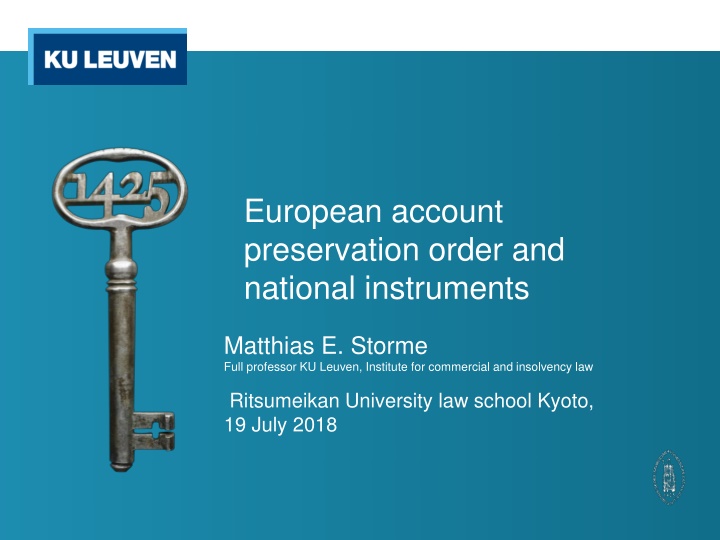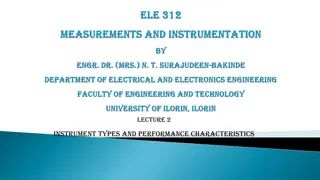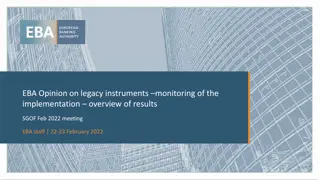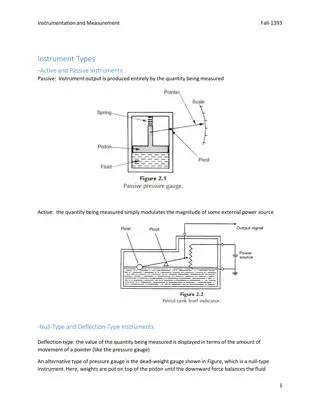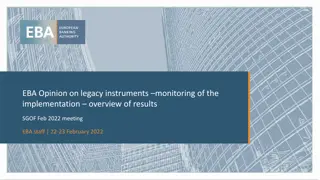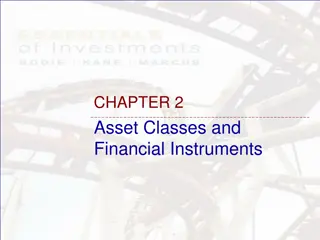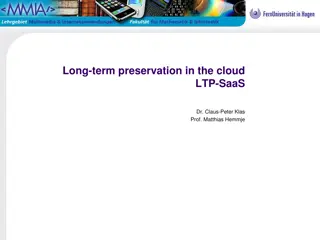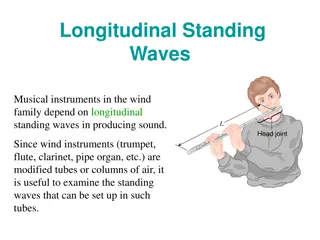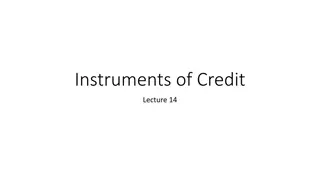European Account Preservation Order and National Instruments Overview
The European Account Preservation Order (EAPO) is an optional cross-border instrument for freezing bank accounts in EU member states, providing quick enforcement without the need for multiple parallel proceedings. It allows for the seizure of funds in debtor accounts with specific jurisdictional and territorial characteristics. While limitations exist compared to national instruments, the EAPO offers advantages like expedited enforcement and broader cross-border reach in enforcing judgments.
Download Presentation

Please find below an Image/Link to download the presentation.
The content on the website is provided AS IS for your information and personal use only. It may not be sold, licensed, or shared on other websites without obtaining consent from the author.If you encounter any issues during the download, it is possible that the publisher has removed the file from their server.
You are allowed to download the files provided on this website for personal or commercial use, subject to the condition that they are used lawfully. All files are the property of their respective owners.
The content on the website is provided AS IS for your information and personal use only. It may not be sold, licensed, or shared on other websites without obtaining consent from the author.
E N D
Presentation Transcript
European account preservation order and national instruments Matthias E. Storme Full professor KU Leuven, Institute for commercial and insolvency law Ritsumeikan University law school Kyoto, 19 July 2018
Topics I. Background and type of instrument II. Main characteristics of the EAPO III. Scope and characteristics as to territory IV. Questions of substantive law V. Limitations (mostly stricter than national law) VI. Advantages compared to national instruments VII. Disadvantages / restrictions compared to national law
I. 1. Background a. Freezing of bank accounts as a very useful instrument to maintain the possibility of enforcement: quick and ex parte. Effective enforcement often delayed because of delay to obtain an enforceable judgment or to enforce it cross-border b. Some form of freezing order is available in all MS, but conditions and effectiveness differ c. Freezing bank accounts in different MS required parallel proceedings to obtain an order Background and type of instrument 2. EU-solution a. Optional instrument for cross-border cases (Compare: EU small claims procedure; EU payment order) b. That can be combined to some extent with national instruments
II. Main characteristics comp. garnishment Causa of seizure Debtor Enforcing creditor Object of seizure Debtor s debtor (third party)
III. Scope and characteristics as to territory 1. Localisation: money in bank accounts in the EU bank accounts are localised by their IBAN (international bank account number), or -in the absence of IBAN- the bank branch where the account is held (4 (4)) 2. Jurisdiction: - as soon as there is an instrument in the sense of either judgment (including court settlement) or authentic instrument: only courts of the MS (6 III and IV) - anticipatory: court of a MS that has jurisdiction on the substance of the matter (but if against a consumer, only courts in the country of the consumer) (6 I and II) 3. Not available for purely domestic cases (art. 3) Available as soon as bank accounts to be preserved are either outside the country of the creditor or outside the country of the court issuing the order.
IV. Questions of substantive law Mostly left to national law: 1. Immunity from seizure - which bank accounts or amounts on bank accounts cannot be seized (art. 2 III and 31). Some immunities in art. 2 IV (accounts with central bank; settlement systems) 2. Formalities after the order: - formalities of the MS of origin for transmission of order to the bank (by court or by bailiff) - law of MS of enforcement for mode of enforcement 3. Substantive effect of seizure: priority or not, ranking (art. 32). Divergence in national law between collectivist and individualist systems of seizure 4. Whether the debtor may pay the debt (voluntarily) with the blocked amount (art. 25 III) Autonomous rule: 4. No longer available as soon as insolvency proceedings are opened against the debtor (see EU insolvency Regulation). 5. Object of seizure: next slide
V. Limitations (mostly stricter than national law) 1. As to the object of seizures: - only bank accounts, no other monetary performance rights (art. 1 I) - subject to pending transactions at the time of reception of the order (art. 24, 2 II). In my view the main unclarity in the regulation. - Belgian case law (Cass. 15 June 2006): > transaction between 2 banks: moment of settlement between banks > single bank involved: when instruction to pay is irrevocable (see PS2 Directive). 2. As to the causes for seizure? Rather wide (some exclusions in Art. 2 I and II) 3. As to relation to parallel or other orders / attempts: - only one EAPO at a time can be requested (art. 16 I) - full disclosure of national orders requested (incl. those obtained or rejected) (art. 16 II)
VI. Advantages compared to national instruments 1. EU-wide: a single order is enforceable in all MS 2. Information on bank accounts unknown: the order may contain a request to information authorities of the MS to identify the bank accounts of the debtor in that MS (Art. 14) 3. National procedure may be: - slower (strict time limits in art. 18 for court and 25 for bank), - stricter in its conditions, or - more expensive (as to the procedure to obtain the order or as to the implementation of the order)
VII. Disadvantages / restrictions compared to national law 1. Substantive conditions a) urgency = real risk that without such measure enforcement will be substantially more difficult. Even where there is a judgment already (art. 7 I) b) if there is no judgment or similar instrument: - sufficient evidence for likeliness of claim (unless there is already an instrument) (art. 7 II) - in most cases security to be provided by the creditor (art. 12) 2. Scope: order is always limited to the amount corresponding to the claim (+ accessories: interest and costs) This is normal where the seizure grants priority, but problematic in others. 3. (cont.)
VII. Disadvantages / restrictions compared to national law (cont.) 3. Duties upon creditor: - initiate proceedings on the merits within 30 days of the application and 14 days of the order (Art. 10) - duty to release over-preserved amounts (in case of blocked amounts in several bank accounts) (art. 27)
